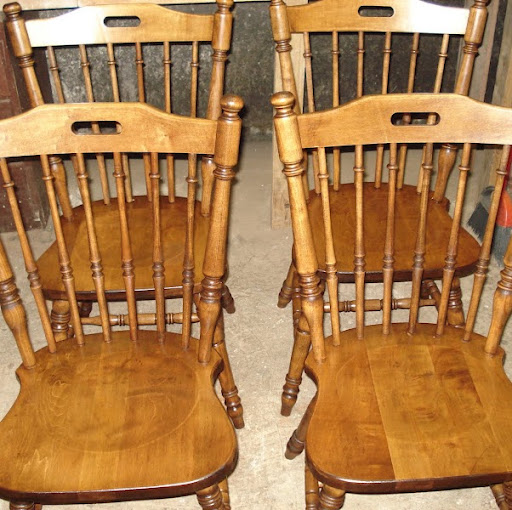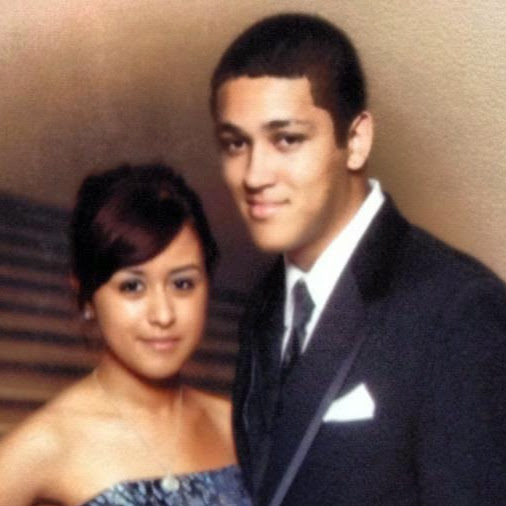Robert F Spivey
age ~33
from Chapel Hill, NC
Robert Spivey Phones & Addresses
- Chapel Hill, NC
- 1204 Moreland Ave, Durham, NC 27707
- Sanford, NC
- Troy, NY
- Cary, NC
- Banner Elk, NC
Isbn (Books And Publications)

Anatomy of the New Testament: A Guide to Its Structure and Meaning
view sourceAuthor
Robert A. Spivey
ISBN #
0024153222

Anatomy of the New Testament: A Guide to Its Structure and Meaning
view sourceAuthor
Robert A. Spivey
ISBN #
0024153303

Anatomy of the New Testament: A Guide to Its Structure and Meaning
view sourceAuthor
Robert A. Spivey
ISBN #
0024152803

Anatomy of the New Testament: A Guide to Its Structure and Meaning
view sourceAuthor
Robert A. Spivey
ISBN #
0024153001

Anatomy of the New Testament: A Guide to its Structure and Meaning
view sourceAuthor
Robert A. Spivey
ISBN #
0131897039

Resumes

Senior Field Sales Manager
view sourceLocation:
180 north Wacker Dr, Chicago, IL 60606
Industry:
Automotive
Work:
Partstrader Llc
Senior Field Sales Manager
Alldata Jul 2007 - Mar 2012
Collision Field Sales Representative
Walker Auto Stores 2004 - 2007
Outside Sales Representative
Autozone 2002 - 2004
Osr
Parks Distributing 2000 - 2001
Sales Representative
Senior Field Sales Manager
Alldata Jul 2007 - Mar 2012
Collision Field Sales Representative
Walker Auto Stores 2004 - 2007
Outside Sales Representative
Autozone 2002 - 2004
Osr
Parks Distributing 2000 - 2001
Sales Representative
Education:
Enloe High School
Skills:
Sales
Customer Service
Sales Management
Management
Team Building
Customer Satisfaction
Leadership
Account Management
Customer Retention
Training
New Business Development
Sales Process
Strategic Planning
Negotiation
B2B
Sales Operations
Automotive Aftermarket
Vehicles
Automobile
Automotive
Sales Force Development
Automotive Repair
Direct Sales
Profit
Operations Management
Cross Functional Team Leadership
Cold Calling
Business Planning
Parts
Selling
Competitive Analysis
Marketing
Marketing Strategy
Purchasing
Pricing
Salesforce.com
Inventory Management
Key Account Management
Sales Presentations
Product Marketing
Forecasting
Coaching
Market Planning
Product Development
Outside Sales
Income Statement
Retail
Network Marketing
Customer Service
Sales Management
Management
Team Building
Customer Satisfaction
Leadership
Account Management
Customer Retention
Training
New Business Development
Sales Process
Strategic Planning
Negotiation
B2B
Sales Operations
Automotive Aftermarket
Vehicles
Automobile
Automotive
Sales Force Development
Automotive Repair
Direct Sales
Profit
Operations Management
Cross Functional Team Leadership
Cold Calling
Business Planning
Parts
Selling
Competitive Analysis
Marketing
Marketing Strategy
Purchasing
Pricing
Salesforce.com
Inventory Management
Key Account Management
Sales Presentations
Product Marketing
Forecasting
Coaching
Market Planning
Product Development
Outside Sales
Income Statement
Retail
Network Marketing

Robert Spivey
view source
Robert Spivey
view source
Robert Spivey
view source
Robert Spivey
view source
Robert Spivey
view sourceLocation:
United States

Robert Spivey
view sourceLocation:
United States

Robert Spivey
view sourceLocation:
United States
Name / Title
Company / Classification
Phones & Addresses
Treasurer
K2 Solutions, Inc.
Dog Trainers
Dog Trainers
5735 Us Highway 1, Southern Pines, NC 28387
9106926898
9106926898
Principle
H And R Enterprises
Grocery Stores
Grocery Stores
1131 Hodge Road, Knightdale, NC 27545
President
Construction Supervision Services, Inc.
Water, Sewer, Pipeline, and Communications an...
Water, Sewer, Pipeline, and Communications an...
300 Sigma Dr, Garner, NC 27529
Owner
Construction Supervision Svc
Water, Sewer, Pipeline, and Communications an...
Water, Sewer, Pipeline, and Communications an...
300 Sigma Dr, Garner, NC 27529
Website: cssi-nc.com
Website: cssi-nc.com
President
Construction Supervision Services Inc
Water, Sewer, Pipeline, and Communications an...
Water, Sewer, Pipeline, and Communications an...
300 Sigma Dr, Garner, NC 27529
Mortgage Broker
Financial Directions Group Inc
Loan Brokers
Loan Brokers
5001 Weston Pkwy Ste 200, Cary, NC 27513
Executive Officer
Financial Directions Of Se Inc
Investment Advice
Investment Advice
3733 National Dr Suite 120, Raleigh, NC 27611
Staff Member
New York State Restaurant Association
Eating Places
Eating Places
409 New Karner Rd, Albany, NY 12205
Us Patents
-
System And Method For Loading An Ion Trap
view source -
US Patent:20190287782, Sep 19, 2019
-
Filed:Mar 19, 2019
-
Appl. No.:16/357488
-
Inventors:- Durham NC, US
Jungsang KIM - Chapel Hill NC, US
Robert SPIVEY - Durham NC, US
Yuhi AIKYO - Durham NC, US -
International Classification:H01J 49/42
H01J 49/16
G06N 10/00 -
Abstract:Systems and methods for loading microfabricated ion traps are disclosed. Photo-ablation via an ablation pulse is used to generate a flow of atoms from a source material, where the flow is predominantly populated with neutral atoms. As the neutral atoms flow toward the ion trap, two-photon photo-ionization is used to selectively ionize a specific isotope contained in the atom flow. The velocity of the liberated atoms, atom-generation rate, and/or heat load of the source material is controlled by controlling the fluence of the ablation pulse to provide high ion-trapping probability while simultaneously mitigating generation of heat in the ion-trapping system that can preclude cryogenic operation. In some embodiments, the source material is held within an ablation oven comprising an electrically conductive housing that is configured to restrict the flow of agglomerated neutral atoms generated during photo-ablation toward the ion trap.
-
Compact Rf Driver For Paul Traps Used In Quantum Computers And Methods Of Making And Using Same
view source -
US Patent:20190057318, Feb 21, 2019
-
Filed:Jul 18, 2018
-
Appl. No.:16/039186
-
Inventors:- Durham NC, US
Geert VRIJSEN - Durham NC, US
Robert SPIVEY - Durham NC, US -
International Classification:G06N 99/00
H03K 3/38
H03H 7/38 -
Abstract:Aspects of the present disclosure describe a compact RF driver circuit for Paul traps in trapped ion quantum computers and methods, and structures including same.
-
Package Comprising An Ion-Trap And Method Of Fabrication
view source -
US Patent:20190027355, Jan 24, 2019
-
Filed:Mar 26, 2018
-
Appl. No.:15/935312
-
Inventors:- Durham NC, US
Kai HUDEK - Durham NC, US
Geert VRIJSEN - Durham NC, US
Robert SPIVEY - Durham NC, US
Peter MAUNZ - Durham NC, US -
International Classification:H01J 49/42
H01J 49/16
H01J 49/24
G06N 99/00 -
Abstract:A package-level, integrated high-vacuum ion-chip enclosure having improved thermal characteristics is disclosed. Enclosures in accordance with the present invention include first and second chambers that are located on opposite sides of a chip carrier, where the chambers are fluidically coupled via a conduit through the chip carrier. The ion trap is located in the first chamber and disposed on the chip carrier. A source for generating an atomic flux is located in the second chamber. The separation of the source and ion trap in different chambers affords thermal isolation between them, while the conduit between the chambers enables the ion trap to receive the atomic flux.
License Records
Robert E Spivey
License #:
2651 - Expired
Issued Date:
Dec 18, 2000
Expiration Date:
Jan 31, 2004
Type:
Occupational Therapist Assistant

Robert Spivey
view source
Robert Spivey
view source
Robert John Spivey
view source
Robert Spivey
view source
Robert Spivey
view source
Robert D Spivey
view source
Robert Spivey
view source
Robert Leon Spivey
view sourceMyspace
Googleplus

Robert Spivey

Robert Spivey

Robert Spivey

Robert Spivey

Robert Spivey

Robert Spivey

Robert Spivey

Robert Spivey
Flickr
Youtube
Classmates

Robert Spivey
view sourceSchools:
Belt Junior High School Wheaton MD 1961-1964
Community:
Everett Cammack, Eric Ferrell, Karen Jennings, Robert Poole, Therese Waters, Nelda Johnson

Robert Spivey
view sourceSchools:
Sweeny High School Sweeny TX 1965-1969
Community:
Lartress Tanner, Caleen Lannen, Cynthia Alamia

Robert Spivey
view sourceSchools:
Blythe Middle School Blythe CA 2001-2005
Community:
Malvin Vice, Bonita Warner, Eunice Barron

Robert Spivey
view sourceSchools:
Delphi Academy of San Diego La Jolla CA 1986-1990
Community:
Santos Dupres, Taylor Pressnell, Jan Lemond

Robert Spivey
view sourceSchools:
Manzanita Elementary School Phoenix AZ 1985-1992, Palo Verde Junior High School Phoenix AZ 1992-1994
Community:
Jeri Sansum

Robert Spivey
view sourceSchools:
Glendale High School Glendale OR 1984-1988
Community:
Chandra Johnson, Jeremy Burrows, Angie Wiggings, Eric Cullett, Silvana Guillermo, Ronald Miller, Angie Montgomery, Sean Rondeau, Scotty Harper, Cindy Sell, Kammi Genett, Brenda Shepherd

Robert Spivey (Dukes)
view sourceSchools:
Graphic Communication Arts High School 625 New York NY 1992-1996
Community:
Michael Thomas, Alexanderia Blair, Michael White
Get Report for Robert F Spivey from Chapel Hill, NC, age ~33















